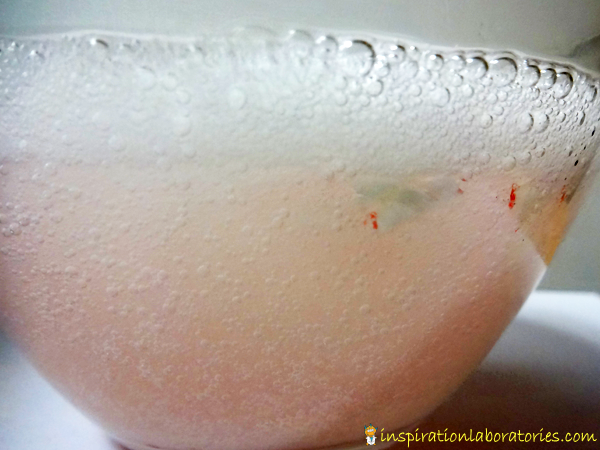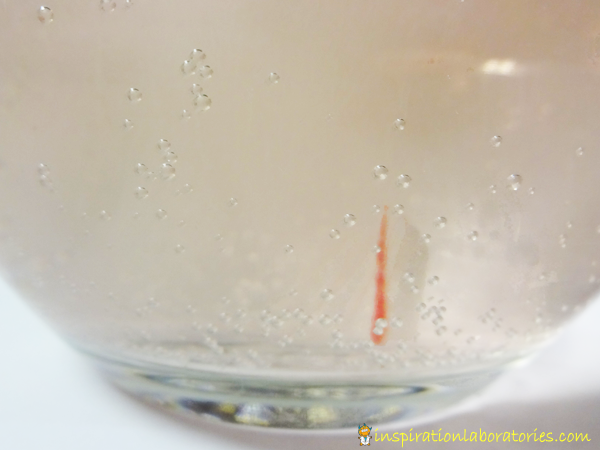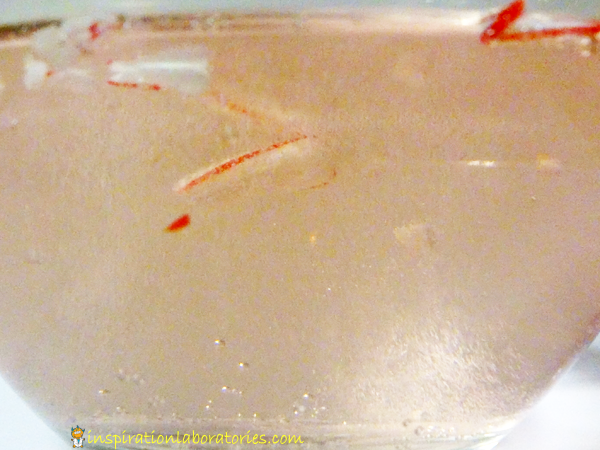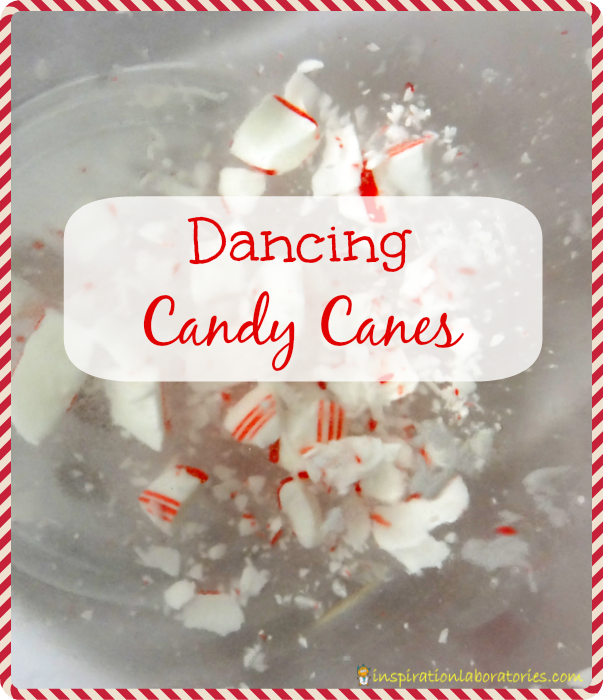Dancing Candy Canes
We continue our countdown to Christmas for day 18 of Advent. I’m sharing a Christmas science idea with you at the beginning of each day until Christmas. Day 18’s activity is Dancing Candy Canes
Dancing Candy Canes
We love baking soda and vinegar around here. It’s always a kid favorite. Dancing Raisins is a classic science demo. Last Valentine’s Day, we did Dancing Valentine Hearts. Today we’re repeating the demo with a Christmas twist using candy canes.
You’ll need:
- baking soda
- vinegar
- water
- bowl
- spoon
- crushed candy canes
I’ve set up the dancing raisins/candy hearts demo several different ways. Basically, you mix baking soda and vinegar together in a bowl. Add your candy cane pieces and watch them dance around. You need the right amount of bubbles produced by the reaction to make the candy dance without floating to the top.
For the candy hearts demo, I mixed 1/2 tablespoon of baking soda in 1 cup of water and added a 1/4 vinegar of vinegar at a time. That seemed to be a good ratio for the candy hearts. For the crushed candy canes. I filled my bowl with half vinegar and half water. We dropped in the crushed candy cane pieces. Then, Aiden added less than a 1/2 tablespoon of baking soda to the bowl. We had to wait for the bubbles to die down a bit before we saw the candy canes move around.

Play with the amounts of baking soda and vinegar until you get the right amount of bubbles. You can see the candy cane starting to lift up at the bottom.

And then rising to the top.

The Science Behind What’s Happening
Baking soda and vinegar react to form carbon dioxide, water, and a salt. Carbon dioxide gas are the bubbles you see during the reaction. The bubbles rise to the top lifting the candy canes up. Bubbles leave the bottom of the candy cane pieces, and the candy falls back down. The bubbles are essentially pushing the candy canes around making them seem to dance.
What else could you make dance with baking soda and vinegar? We tried jingle bells and sparkly pom poms. The jingle bells were too heavy and the pom poms were too light.
I’ll see you tomorrow for Day 19’s Christmas science activity.
More Christmas Activities for Kids
- Try this candy cane science experiment and test how long it takes the candy cane to dissolve.
- Catch all of our Christmas Science Advent Calendar ideas.
- Explore pine needles and Christmas trees and take our Christmas science challenge.
- Turn your child’s art into a great Christmas project with these 15 Christmas ideas with children’s art.
Stay connected with Inspiration Laboratories so you don’t miss a thing! We’re on Twitter, Google+, Pinterest, or Facebook . You can also subscribe to my posts by e-mail.
![]()


Leave a Reply